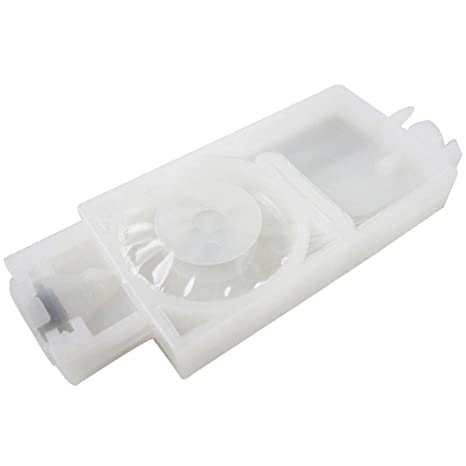What is a DTF Ink Damper?
[author] [author_image timthumb=’on’]https://americanprintandsupply.com/wp-content/uploads/2023/08/RSuper.jpg[/author_image] [author_info]With over a decade immersed in the realm of digital print technology, Rob Super boasts an impressive background as the owner and operator of a thriving full-scale dye sublimation cut and sew factory. An early adopter of Direct-to-Film (DTF) printing, Rob’s unwavering enthusiasm for digital print technologies sets him apart in the industry. His expertise spans the digital-analog divide, cementing his status as a true aficionado of the art.[/author_info] [/author] In the realm of printing technology, achieving high-quality results while maintaining efficient operations is of paramount importance. One vital component that contributes to this balance is the direct-to-film (DTF) ink damper. This innovative device plays a crucial role in optimizing ink flow, ensuring consistent and precise printing. In this blog post, we will explore the inner workings of a DTF ink damper and understand its significance in enhancing printing efficiency. Understanding the DTF Ink Damper: The DTF ink damper is a specialized component used in digital printing systems, particularly in the context of DTF printing. DTF printing, also known as direct-to-film transfer printing, is a technique that involves printing designs onto a special film, which is then transferred onto various surfaces like fabric, ceramics, and more. The ink damper serves as a crucial intermediary between the ink source and the print head, maintaining a stable ink supply and regulating ink flow during the printing process. Working Principles: Let’s explore the key principles that drive the functionality of a DTF ink damper: Ink Supply Regulation: The ink damper acts as a reservoir that stores and supplies ink to the print head. It ensures a continuous and consistent flow of ink, preventing sudden fluctuations that could impact print quality. By regulating the ink supply, the damper plays a vital role in preventing ink starvation or over-inking, thereby promoting optimal printing results. Air Bubble Removal: Air bubbles can be a common issue in ink flow, leading to irregularities and disruptions in the printing process. The DTF ink damper incorporates mechanisms to eliminate air bubbles, allowing for smooth and uninterrupted ink flow. This is often achieved through the inclusion of filters, vents, and anti-foaming agents within the damper assembly. Pressure and Viscosity Control: The DTF ink damper maintains a controlled pressure environment within the ink system. By exerting pressure on the ink, the damper ensures that the ink flows smoothly through the print head nozzles, enabling accurate and precise printing. Additionally, the damper helps to manage the viscosity of the ink, ensuring it remains within the optimal range for efficient printing. Ink Filtration: To prevent particulate matter or impurities from clogging the print head nozzles, the DTF ink damper often incorporates a filtration system. This ensures that the ink delivered to the print head is clean and free from debris, minimizing the risk of nozzle blockages and print defects. Benefits of DTF Ink Dampers: DTF ink dampers offer several advantages that contribute to enhanced printing efficiency: Consistent Printing: By maintaining a stable ink supply and regulating ink flow, DTF ink dampers ensure consistent and uniform printing results, minimizing variations and defects. Reduced Downtime: The inclusion of air bubble removal mechanisms and ink filtration systems reduces the likelihood of clogs and blockages, reducing downtime for maintenance and increasing overall productivity. Improved Print Head Lifespan: By providing a consistent ink flow and protecting the print head from impurities, DTF ink dampers help prolong the lifespan of the print head, reducing the need for frequent replacements. Conclusion: The direct-to-film (DTF) ink damper plays a critical role in optimizing ink flow and maintaining printing efficiency in DTF printing systems. By regulating ink supply, removing air bubbles, controlling pressure and viscosity, and incorporating ink filtration, these dampers ensure consistent and high-quality printing results while minimizing downtime and enhancing the lifespan of print heads. As digital printing technologies continue to advance, DTF ink dampers stand as essential components in achieving optimal printing performance. The frequency of damper replacement can vary depending on several factors. Operating conditions being the most prevalent. It is our recommendation that for heavy usage ink dampers be replaced every 4 weeks and every 8 weeks with light to normal usage.


